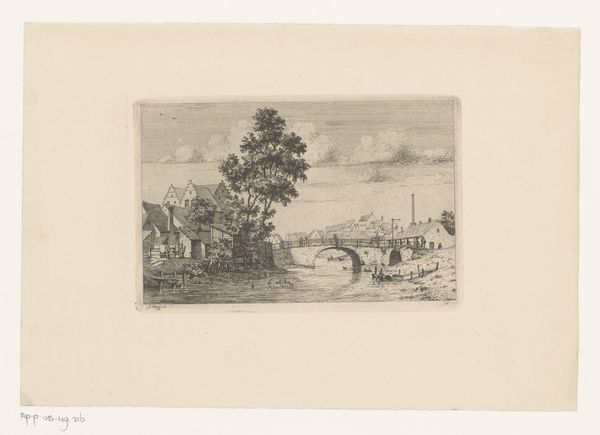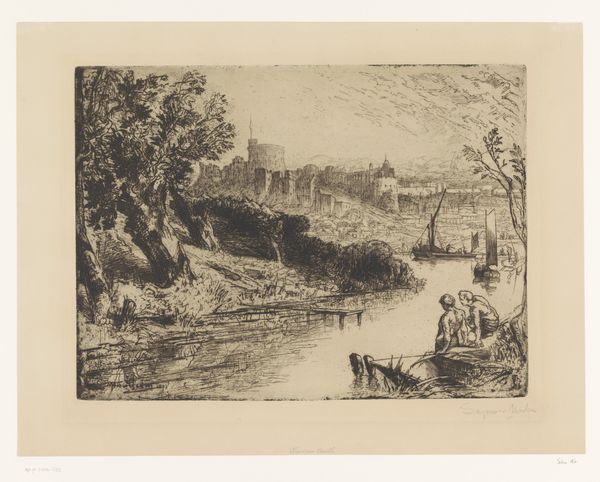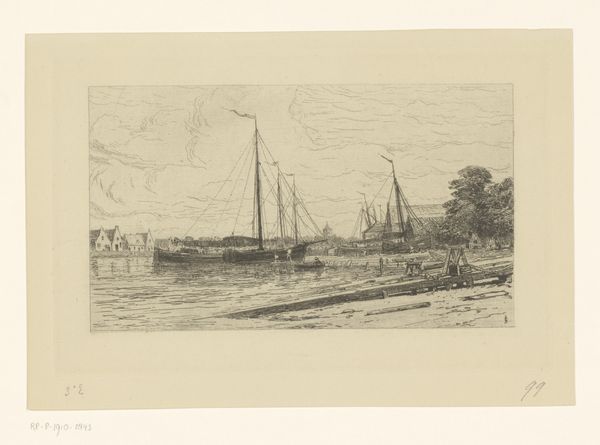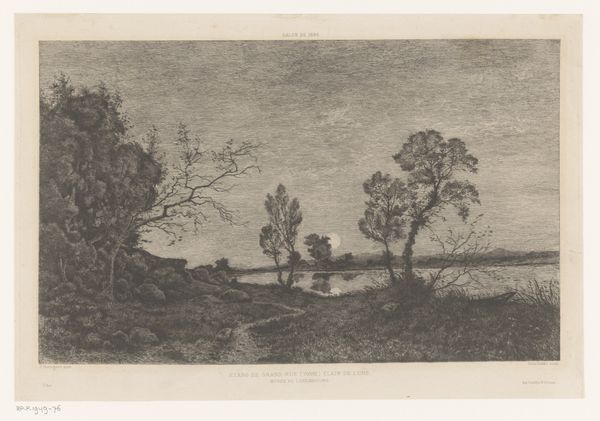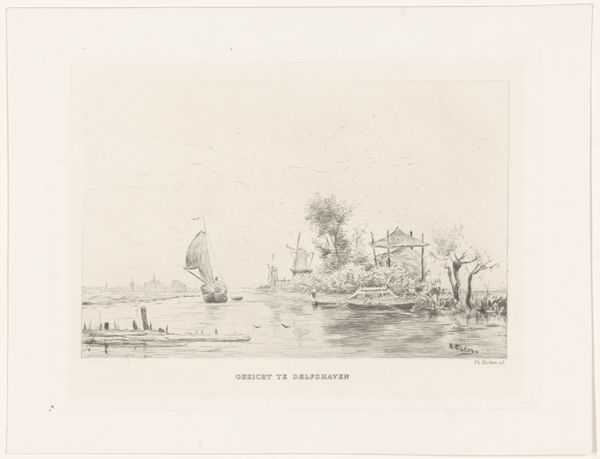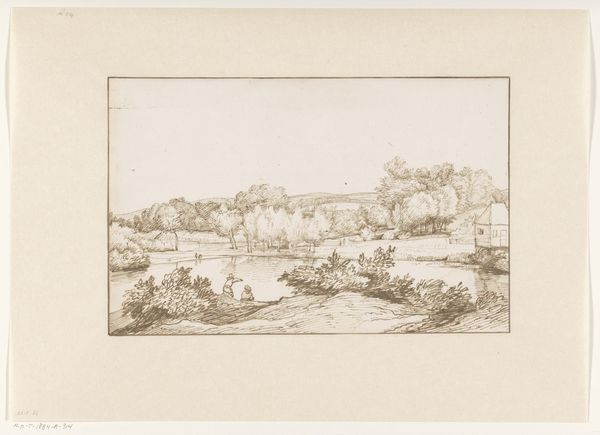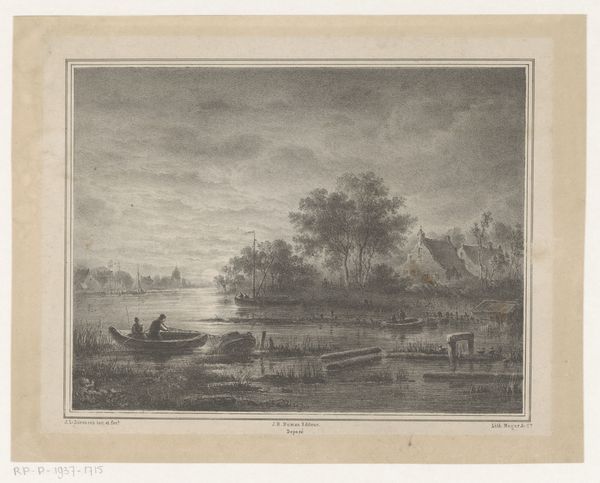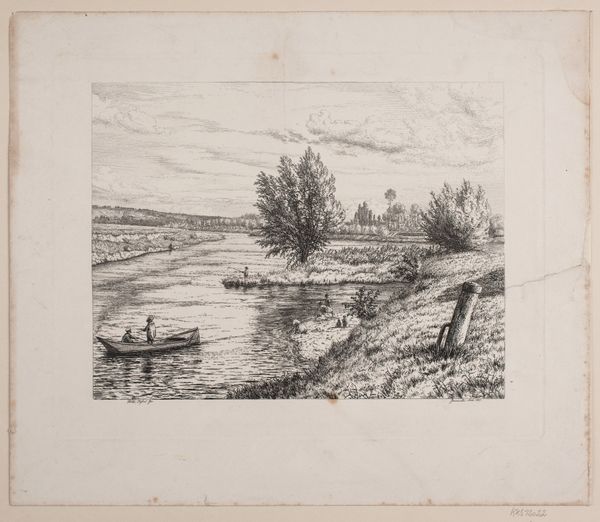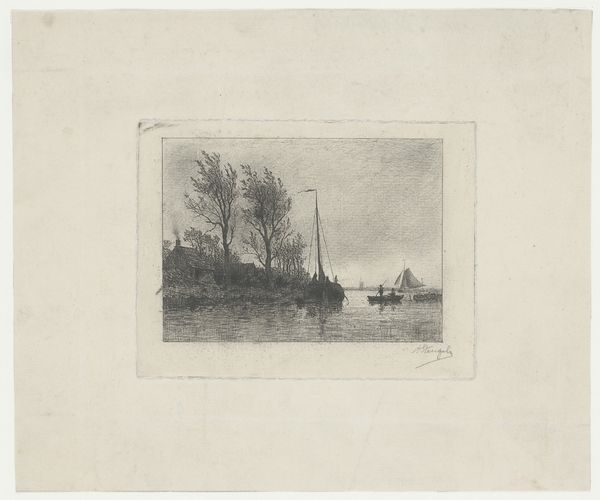
Rivierlandschap bij Namen met een geboomde veerpont die de rivier oversteekt 1823 - 1869
0:00
0:00
charlesbilloin
Rijksmuseum
print, engraving
# print
#
landscape
#
river
#
romanticism
#
genre-painting
#
engraving
Dimensions: height 184 mm, width 211 mm
Copyright: Rijks Museum: Open Domain
This river landscape near Namur was etched by Charles Billoin sometime in the mid-19th century. The technique of etching allows for finely detailed lines, and you can see how Billoin used this to his advantage, creating intricate patterns in the foliage and capturing the subtle textures of the water. The printmaking process itself is rooted in labor and reproduction. Etchings like these were made by skilled artisans who transferred images onto metal plates, which were then used to create multiple copies. This speaks to a broader social context of increased image circulation and the rise of print culture during the 19th century, making art more accessible to a wider audience. Although the image depicts a serene river scene, it also hints at the changing landscape of the time, where industrialization and urbanization were beginning to reshape the natural world. Appreciating the printmaking processes and materials used in works like these allows us to consider the social and cultural forces that shaped their creation.
Comments
No comments
Be the first to comment and join the conversation on the ultimate creative platform.

